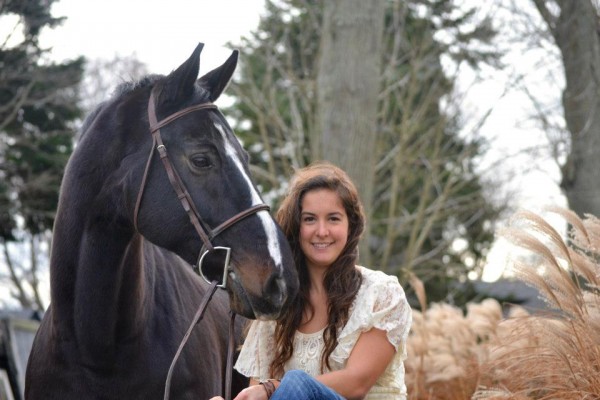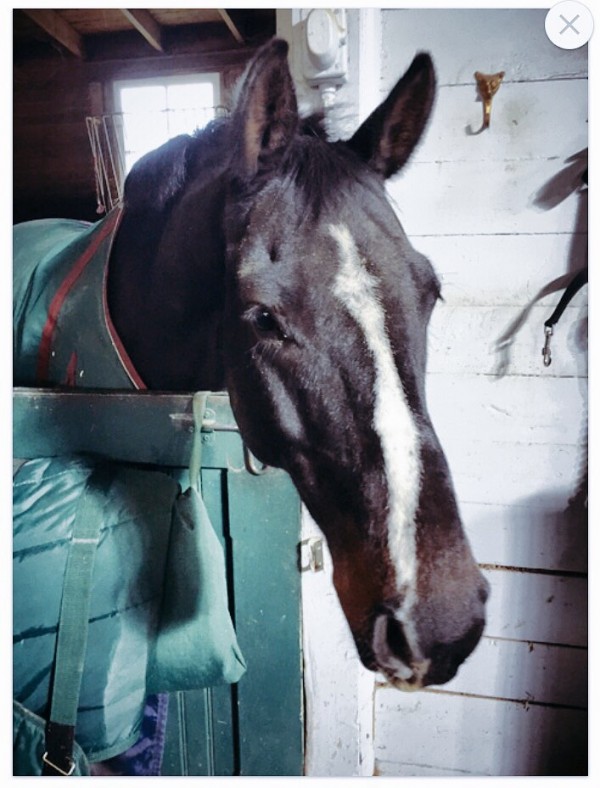How to Train Your Equine-Turned-Dragon: A Stall Rest Saga
Editor’s Note: Since this article was published, the ColiCare program has been upgraded to provide up to $10,000 in colic surgery reimbursement. Click here to learn more.

SmartPaker Jenna shares the story of her horse Hershey’s stall rest saga:

For equestrians the phrase “stall rest” is about as horrifyingly vague as “tax audit” or “temporarily out of stock“. Knowing my active and easily-bored gelding, it sounded like a particularly cruel form of punishment for us both. My vet explained that Hershey had overstrained his right front leg to the point of dangerous thinness and even holes in his tendons and ligaments. To get my partner back to feeling his best, I now had two options: turn him out and hope time would heal all, or try blood platelet injections and stall rest. We surged forward with the more aggressive approach; if my horse was going to feel better he was going to feel better ASAP, not “hopefully after a few months”.
Now, stall rest, even for the best behaved horses, can become more than just a necessary evil. For Hershey and me it became the bane of our existence. My “in your pocket” puppy dog of a gelding was somewhat affectionately referred to as “The Dragon” by fellow boarders and staff. So, how do you keep an active, fit, intelligent animal from breathing fire after weeks or even months of nothing but hand walking? Easy, you do everything in 5 Simple Steps.
#1 – Stall Entertainment is Key
For the duration of our stall resting, Hershey has had an Uncle Jimmy’s No Sugar Added Licky Thing hanging in his stall. I mean hanging down where he can NOT manage to push it against a wall and demolish it, I learned that the hard way. The No Sugar Added part became increasingly important as the weeks went on, any way to decrease the amount of energy stored up was worth the effort.
#2 – Encourage Boredom Eating
While Hershey saw it as an act of betrayal at first, we’ve both come to love his SmartPak Small Hole Haynet because it makes his munching last all day. Without being able to enjoy turnout or any grazing, he needed to slow down on his hay to support all the stomach acid that could have built up otherwise. Not to mention, when I’m bored, I like to eat, so I can only assume my horse would prefer to do the same. While I still can’t make a box of Oreos last more than a few days, I know Hershey is eating the way nature intended, in small amounts all day long.
#3 – Do More Than Walk Laps
Once our hand walking portion of rehab came into play, we added new elements to keep the Dragon safely amused. We spent 20 minutes a day walking around our indoor, both of us trying not to explode with unused energy, until I realized the time I was wasting just fighting him to quietly walk laps. We started to work our brains and our bodies a little to make each day more purposeful. Some things to try are playing Follow the Leader (if you have a buddy to hand walk with) or tracing the pattern of a dressage test or jump course. With each new activity I watched him settle into himself, not quite a tame Dragon, but a happier one for sure. Before you start these kinds of walking activities with your horse, be sure to run them by your veterinarian first to make sure they’re okay for his particular injury.
#4 – Food is a Great Motivator
After adding some brain and body work in, we finished with stretches for Hersh, using nice long carrots that forced him to reach to each haunch, then up between his forelegs to where the girth would touch, and even way out in front of him to get his reward. Standing around all day is an easy way to get stiff and sore, by walking around and practicing our ground work, we were both able to warm up a bit, and having him stretch his neck and body a bit helped make sure he stayed as comfortable as possible, and we were able to end every walk happily with snacks for him (and maybe some snacks for me).
#5 – Don’t Underestimate the Power of Nutrition
Keeping Hershey’s tummy and brain occupied were definitely major assets, but I attribute a lot of our success to the nutrition we had on board. We cut down his high-calorie grain by half to compensate for the lack of calories he was burning and added SmartVite Thrive Pellets to bridge the nutrient gaps that would leave, along with SmartDigest Ultra for his digestive health while being cooped up. He also received SmartFlex Rehab Pellets to support normal healing, and, my favorite, SmartCalm Ultra Pellets to provide him with nutrients to support his nervous system and help him stay relaxed.
If you’re looking to provide your horse with multi-purpose support during recovery, consider SmartR&R Pellets. They weren’t available when Hershey was on stall rest, but if they had been, they would have been THE supplement for him! Supporting the recovery process, digestion, and calming couldn’t be easier because this formula has it all with the active ingredients of SmartFlex Rehab Pellets, SmartTranquility Pellets, and SmartDigest Ultra. Plus, you’ll be eligible to apply for ColiCare, our free $7,500 colic surgery reimbursement program.
I won’t say we loved every second of hand walking and stall resting, but we managed to create some great habits and behaviors from it! I now have a more respectful and attentive horse on the ground, and he came through the winter well-healed without reinjuring himself in frustration or pillaging any nearby villages. With a good program and a plan, even the longest stall rest eventually comes to an end, and while it may not take away the initial gut-wrench, hopefully our tips and tricks can help pass the time and keep you and your dragon productive and safe!